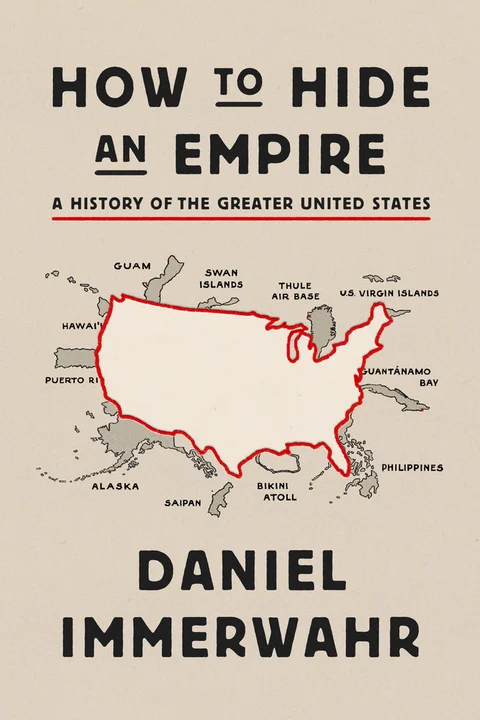
How to Hide an Empire: A History of the Greater United States
Daniel Immerwahr
Many years ago, I took my children on an educational trip to Washington, DC. I was startled to see outside one governmental office a listing of all the parts of the US that included fifty American states and five inhabited territories. While I was vaguely aware of the US having territories, I could really only remember Puerto Rico. Apparently, I am not alone in my ignorance. Very few people in this country are aware of the extent to which America has always been a colonial power. At its height in 1945, the American empire claimed more inhabitants outside the US mainland than in the contiguous US mainland.
In "How to Hide an Empire", Daniel Immerwahr has written a fascinating history of the American experience of colonial power. Even in 1776, there was a distinction made between states and territories (the American word of choice for "colonies".) The US government has always had an uneasy relationship with its territories starting with frontiersmen like Daniel Boone. As designated in the Constitution, territories are properties that belong to the United States, and they are to be governed directly by Congress. Ironically considering the causes of the American Revolution, these citizens have no elected officials to represent them in national government. That is still true today. For a variety of reasons, not least the desire to preserve racial and ethnic purity, the US has never desired to have an old school, European styled empire. We have never needed to obtain the natural resources that led so many other countries to colonize. We have, however, taken territory for different reasons primarily to secure military and commercial ends.
World War II fundamentally changed the business of empire and geopolitics. Colonization was no longer necessary to obtain resources. When the conflict interrupted the flow of goods, scientists created substitutions for the needed materials. An excellent example of this was the need all combatants had for rubber for their vehicle tires. US leaders privately worried that they would have to confiscate all the privately owned tires in the country for the war effort. Instead, scientists created a synthetic rubber that meant the US no longer needed to rely on rubber plantations in Brazil. The need for colonial bases for secure real time communications was eliminated by ever more advanced radio technology. Even the need for secure bases to transport the massive amount of war material across the world was eliminated by the creation of larger more efficient transport planes and DIY product design. Measurements and parts were standardized so that parts could be made anywhere in the world and assembled on site. Just as they had addressed supply chain problems, scientists went to work optimizing conditions for ground troops. Within a short time, new antimalarial drugs and DDT reduced the number of military personnel malaria cases. New drugs treated venereal diseases, dysentery, scarlet fever and pneumonia. In a very real sense World War II created the modern global world as we know it today.
Ranging from guano islands to bloody battles in the Philippines and Puerto Rico, from the creation of synthesized rubber and plastic to the Beatles, Immerwahr has written a history of the United States from an entirely new perspective. And it is a well written, fun read! Strongly recommended for anyone interested in modern American and world history.
 Skip to main content
Skip to main content


